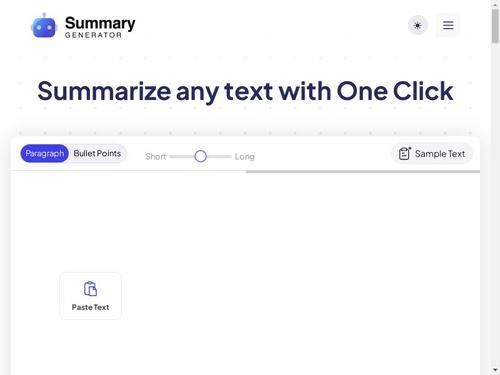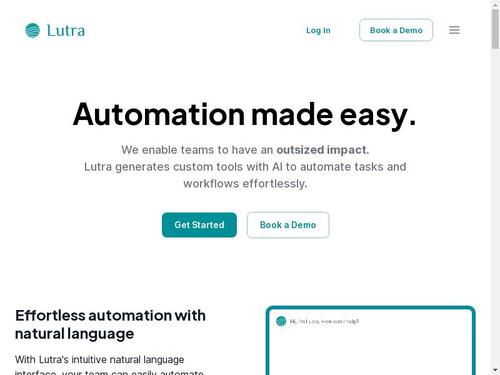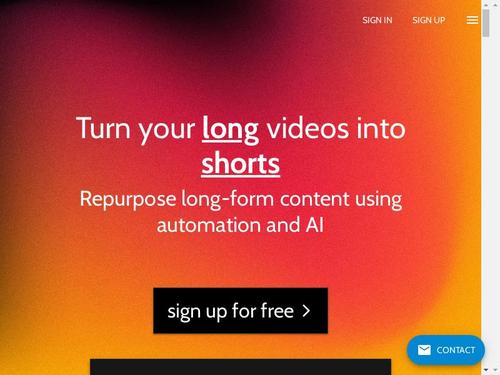- You are here:
- Home »
- AI Tool Reviews
Category Archives for AI Tool Reviews

Cal AI Review
In the rapidly evolving landscape of technology, artificial intelligence continues to revolutionize various sectors, and productivity tools are no exception. Among the myriad of AI-powered solutions designed to enhance efficiency and streamline workflows, Cal AI has emerged as a notable contender. This cutting-edge tool promises to redefine how individuals and teams manage their time, tasks, […]
Continue readingBeforesunset AI Review
In today’s fast-paced digital landscape, productivity tools are essential for maximizing efficiency and streamlining workflows. Among the myriad of options available, Beforesunset AI has emerged as a notable contender, promising to revolutionize how we approach daily tasks and project management. Designed with cutting-edge artificial intelligence, this tool aims to enhance productivity by automating routine processes, […]
Continue reading
AI Summary Generator Review
In an era where time is increasingly scarce and information overload is a daily challenge, AI-powered productivity tools have emerged as game-changers for professionals across various fields. Among these innovations, AI summary generators have gained significant traction for their ability to distill extensive documents into concise, actionable insights. These tools promise to enhance productivity by […]
Continue reading
Whimsical AI Review
In the rapidly evolving landscape of artificial intelligence, productivity tools have emerged as game-changers for individuals and businesses alike. Among these innovative solutions, Whimsical AI has captured significant attention for its ability to enhance efficiency and streamline workflows. Designed to integrate seamlessly into various work environments, Whimsical AI offers a suite of features aimed at […]
Continue reading
Lutra.ai Review
In today’s fast-paced digital landscape, businesses and individuals alike are constantly seeking innovative tools to boost efficiency and streamline workflows. One such breakthrough is Lutra.ai, a cutting-edge AI productivity tool designed to enhance organizational capabilities and optimize task management. With the promise of leveraging artificial intelligence to simplify complex processes, Lutra.ai is positioned as a […]
Continue reading
Trimmr.ai Review
In the ever-evolving landscape of digital content creation, the demand for efficient and intuitive video editing tools has surged. Enter Trimmr.ai, a cutting-edge AI-powered video editing platform designed to streamline the editing process and elevate content quality. As creators seek ways to enhance their workflows and produce polished videos with minimal effort, Trimmr.ai promises to […]
Continue reading
Viggle.ai Review
In a world where video content dominates the digital landscape, tools that enhance video creation and analysis are becoming increasingly vital. One such innovation is Viggle.ai, an artificial intelligence-powered video tool designed to revolutionize how we interact with and create video content. By leveraging advanced machine learning algorithms, Viggle.ai offers a suite of features that […]
Continue reading
AI Video Cut Review
In the rapidly evolving landscape of digital content creation, AI-driven tools are transforming how creators approach video editing. Among these innovations, the AI Video Cut tool stands out as a significant advancement, promising to streamline the editing process through intelligent automation. This tool leverages cutting-edge artificial intelligence algorithms to analyze, trim, and optimize video footage […]
Continue reading
Videoproc Converter AI Review
In the ever-evolving landscape of digital media, AI-driven tools are transforming how we create, edit, and manage video content. Among these innovative solutions, Videoproc Converter AI stands out as a powerful application designed to simplify and enhance the video conversion process. Leveraging advanced artificial intelligence algorithms, this tool promises not only to streamline the conversion […]
Continue reading
Nova AI Review
In the rapidly evolving world of digital content creation, video tools are continually pushing the boundaries of what’s possible. Among these innovations, Nova AI stands out as a groundbreaking solution designed to streamline and elevate video production through the power of artificial intelligence. This review delves into the features and capabilities of Nova AI, examining […]
Continue reading